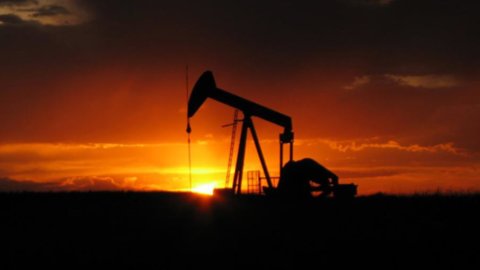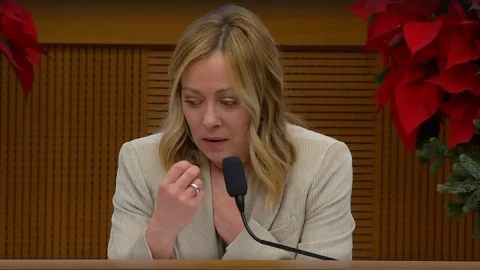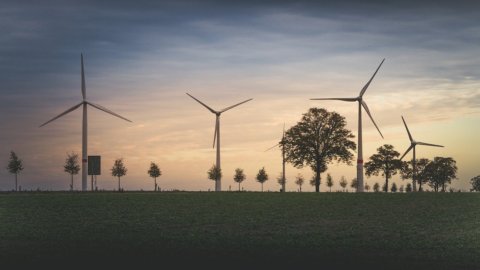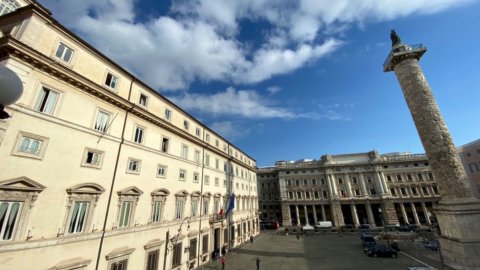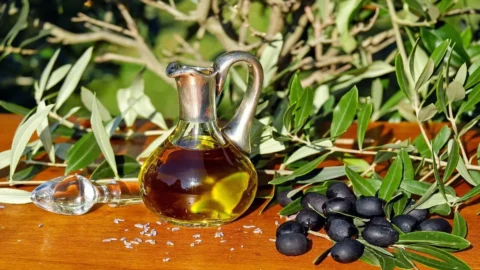The outgoing President of the Council of Ministers Enrico Letta undertook, on 1-4 February, a institutional trip in United Arab Emirates, Qatar and Kuwait. And one of the answers è been a investment of the KIA Fund of 500 million euros in the Fondo Strategico Italiano, an investment holding company created in 2011, with the CDP Group as the controlling shareholder (80%), followed by the Bank of Italy (20%), whose capital it is open to other Italian or foreign institutional investors.
Kuwait is a small but very rich country with a relatively open economy and crude oil reserves of nearly 105 billion barrels (about 8% of world reserves). These resources represent almost half of GDP, 95% of export earnings and, therefore, 95% of government revenues. The country yes é pledged to increase oil production to 4 million barrels per day by 2020. Due to a budget surplus generated by oil prices, Kuwait survived the economic crisis that began in 2008 unscathed and in 2010 it was able to publish its twelfth consecutive budget surplus. Thanks to this positive tax situation, a little é been done to diversify and reform the economy, but there seems to be more given the acrimonious relationship between the National Assembly and the Executive itself which has hindered the progress of economic reforms. Despite this, in 2010 the government approved an economic development plan which it pledged to spend up to $104 billion over 5 years to diversify the economy away from oil, get more investment, and increase private sector participation in the economy. THE markets they are now speculating whether such an increase in spending over the projected time frame is actually sustainable.
Taking a historical look, é in 1934 the ruler of Kuwait issued an oil concession for the Kuwait Oil Company (KOC)jointly controlled by the British Petroleum Company and the Gulf Oil Corporation. In 1976, the Kuwaiti government nationalized the KOC. The following year, the government took over some onshore production in the area bordering Saudi Arabia. From that moment the Kuwait Gulf Oil Company (KGOC) it produces jointly with Saudi Arabian Chevron which, with the purchase of the Getty Oil Company in 1984, acquired the concession for onshore extraction in the cofine area. Saudi Arabia has renewed Chevron's concession in the Divided Zone for another 30 years, effective February 2009. KGOC also manages the offshore production operations, while Aramco Gulf Oil Company (AGOC) manages the Saudi portion of the offshore . Today the Kuwait Petroleum Corporation (KPC), an integrated state-owned oil company, is the parent company of public oil companies. They include Kuwait Oil Company which produces oil and gas, Kuwait National Petroleum Company which operates refining and domestic sales, Petrochemical Industries Company which produces ammonia, urea, ethylene, propylene and styrene and participates in a number of success with Dow Chemical in Kuwait and abroad. Also included are Kuwait Foreign Petroleum Exploration Company, responsible for upstream exploration and production outside Kuwait (in many developing countries and Australia), Kuwait Oil Tanker Company, Kuwait Gulf Oil Company, responsible for exploration and production in Kuwait's offshore and onshore portions and Kuwait Petroleum International which manages the refining and retail operations outside Kuwait (in Europe and East Asia).
According l 'Organization of the Petroleum Exporting Countries (OPEC), Kuwait holds approximately 101,5 billion barrels of proven oil reserves, the fifth largest oil reserve in the world after Saudi Arabia, Canada, Iran and Iraq. In 1993, Kuwait restored its oil production capacity to the level of 2,4 million barrels per day. Kuwait's current oil production capacity is estimated at 3 million barrels per day. The government plans to increase its capacity to 3,5 million b/d by 2015 and 4,0 million b/d by 2020. Many analysts question whether these goals are actually achievable. KPC has purchased refineries in the Netherlands, Italy and service stations in the Benelux countries, Italy and Scandinavia from Gulf Oil Company. In 1987, KPC bought a 19% stake in British Petroleum, which was later reduced to 10%. KPC markets its products in Europe under the Q8 brand. In 2006 it announced its intention to participate in a joint venture to build and operate an associated refinery and petrochemical plant in China, while in April 2008 it signed a joint venture agreement with Idemitsu Kosan (Japan) to own a 35,1 .6%, worth $2008 billion, of Vietnam's second largest refinery. Both projects are awaiting national license processing. In 14, KPC awarded a $930.000 billion project to increase refining capacity by 1,5 barrels per day to 2012 million barrels per day by 2009. However, this project was canceled in March XNUMX since, under political pressure, the tender process was reviewed and deemed illegitimate.
However, the proceeds from oil and investments have also served the government to sponsor many social assistance projects, public works and development plans. Among the benefits for Kuwaiti citizens we find retirement income, wedding benefits, housing loans, virtually guaranteed employment, free medical services and education at all levels. In virtueù of the Amiri decree the government occasionally disburses a portion of its budget surplus as a contribution to all Kuwaiti citizens. In 2006, an Amiri grant of 200 Kuwaiti dinars (about $700) was paid out to every eligible citizen. In 2007, the government implemented a debt relief program for Kuwaiti citizens amounting to just over $1 billion. In February 2011, the government announced a grant from Amiri of approximately 1,5 billion Kuwaiti dinars (about $5,3 billion), including 1.000 dinars (about $3.500) to be paid to every citizen in free monthly food baskets for each Kuwait family for 14 months. THE foreign nationals residing in Kuwait they do not have access to these welfare services. The right to own shares in publicly traded companies, real estate and banks or a majority stake in any business is limited to Kuwaiti citizens only and, in limited circumstances, to nationals of Gulf Cooperation Council (GCC) countries. However, on December 26, 2007, the Kuwait National Assembly approved a law amending the previous Decree No. 3 of 1955 by setting the foreign corporate tax rate at 15% to attract more FDI. The foreign corporation tax rate previously ranged from 0% to 55%.
About this, industry in Kuwait consists of several large export-oriented units, see under petrochemicals and oil refineries, and a number of small producers. Leading sectors are also to be found in the processes of water desalination, ammonia, desulphurisation, fertilizers, bricks, blocks and cement plants. The governments of the USA and Kuwait signed in 2004 the Trade and Investment Framework Agreement (TIFA), an agreement establishing a forum to address mutual trade concerns and necessary economic reforms. In 2008 the country also signed, together with the other GCC nations, a free trade agreement with Singapore, followed the following year by the one with EFTA. Kuwait does not seems forò able to attract large productive investment from abroad, largely due to bureaucratic hurdles and business barriers that inhibit its abilityà to do business on site.
In turn, agriculture is limited by lack of water and arable land. And much of the land conducive to agriculture in south-central Kuwait è destroyed when Iraqi troops set fire to oil wells in the area creating large "oil lakes". Fish and shrimp are abundant in territorial waters, and large-scale commercial fishing has been undertaken locally and in the Indian Ocean with some success.
The Kuwaiti dinar is pegged to a basket of currencies. Effective December 1, 2011, 1 USD changed to 0,2749 Kuwaiti dinars. The Kuwait Investment Authority's (KIA) Kuwait Sovereign Wealth Fund manages its General Reserve Fund and Kuwait Generations Future Fund. The KIA is barred by law from publicly discussing the size of firms, engaging in only the more general discussions of asset allocation. This institution does, however, provide behind closed doors full details of all funds under its management, including strategic asset allocation, benchmarks and rates of return to the Cabinet and the National Assembly. Kuwait has also been a major source of foreign economic assistance to other states through the Kuwait Fund for Arab Economic Development (KFAED). The Fund is an autonomous state institution created in 1961 on the model of Western and international development agencies and is chaired by the Foreign Minister of Kuwait. In 1974, the fund's lending mandate was extended to all non-Arab developing countries. According to the latest statistics, the paid-up capital amount of the fund is US$7 billion. The fund has granted 805 loans with a total value of approximately 15,6 billion since its inception and has extended technical assistance to 102 countries, including 16 Arab countries, 40 African countries, 35 Asian and European countries and 11 countries of the 'Latin America. During 2011, the fund signed 15 loan agreements worth USD 316.270.000 with four Arab countries, five African countries, three countries in East Asia, South Asia and the Pacific, two countries in Central Asia and Europe, and one country in Latin America and the Caribbean region.
THEItaly, fifth place among the mostù important trading partners of Kuwait and with a share equal to 5,1%mainly exports machinery, metal containers, mechanics, building components, marble and worked stones, clothing and furnishing items. Numerose the Italian companies in plant and construction sector which have been awarded important orders in the field of large projects, in that of road construction, cosJust as there are numerous Italian manufacturing activities that can offer innovative solutions to the problem of municipal solid waste disposal with excellent business development prospects.

